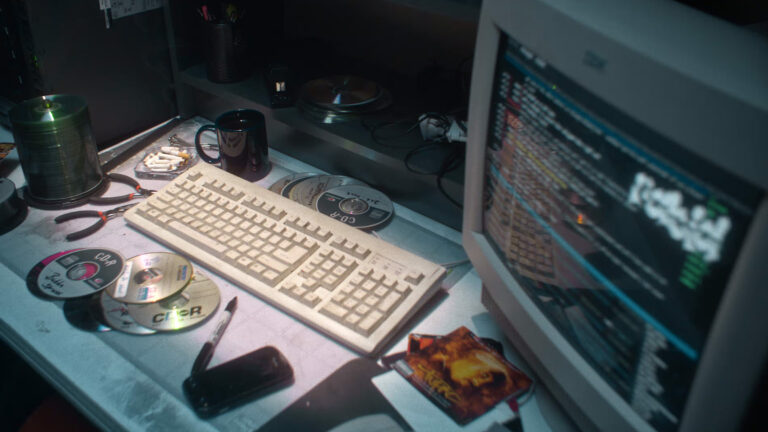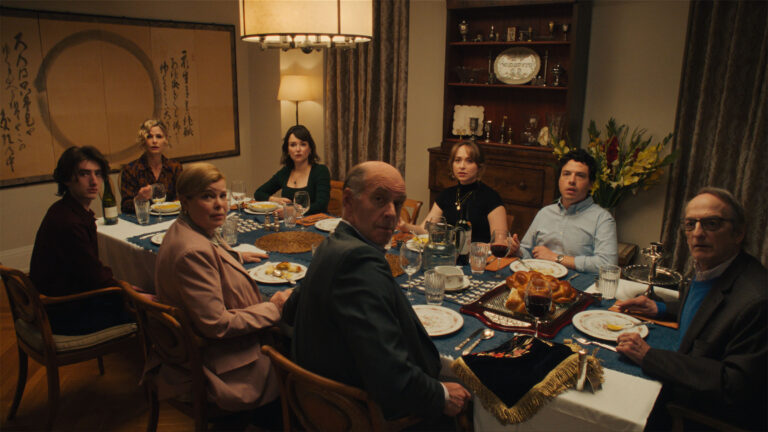There are a lot of ways editors can develop their trade – textbooks, film school, mentors, and video tutorials. But one of the most effective ways to learn? Scrutinize and reverse engineer exceptional works of editing.
The history of cinema is rich with films that are essentially masterclasses in editing, representative of the pinnacle of what is possible in the craft. Looking at them closely offers not just inspiration, but extractable lessons that any editor can absorb. In that spirit, we’ve chosen six movies – all of them Oscar winners or nominees for editing – that represent some of the best of the best. For each, we’ll break down what makes them must-see films and what specific effects they achieve with editing that any craftsmen will need to know.
#1. All That Jazz: The Power of Storytelling Through Editing
You could watch just the first six minutes of Bob Fosse’s All That Jazz and receive a masterclass in editing courtesy of Alan Heim who won an Oscar for his work. Editor Jack Tucker once put it nicely when he said, “Editing is not a technical process. It’s an artistic process. It’s about storytelling.” While I might add that the technical skills are important, the storytelling absolutely comes first.
Consider the first post-title moments of All That Jazz: a series of shots that show us Joe Gideon going through his morning routine.
Despite the mundane nature of that concept, the way the sequence is put together introduces us to everything we need to know about the man we’ll be spending two hours with. The black screen and cough tells us he’s not well. The tape player tells us about the role of music in his life. The eye drops tell us he’s overworked and sleep-deprived. The cut to the fizzing Alka-Seltzer conveys the stress of an unsettled stomach. The next shot of him drinking the Alka-Seltzer reveals a poster of dancing legs that hint at his world: Broadway. The cut to the cigarette in the shower tells us he’s a chain smoker. The shot of the pill bottle implies drug abuse. In just 9 shots over 32 seconds, we get a full character portrait thanks to very succinct editing.

Then there’s the famous “On Broadway” sequence, that over the next four-and-a-half minutes tells an entire story about the audition process for a Broadway show without a single word spoken. The first few shots of nervous and practicing dancers ask the question, “Who will make it?” and introduce the stakes that will be resolved by the end with a series of quick match cuts of the finalists twirling in place. But the sequence also does much more. It reveals Gideon’s role in this world with a lingering shot of him front-and-center, surveying the full stage revealed in an establishing shot.
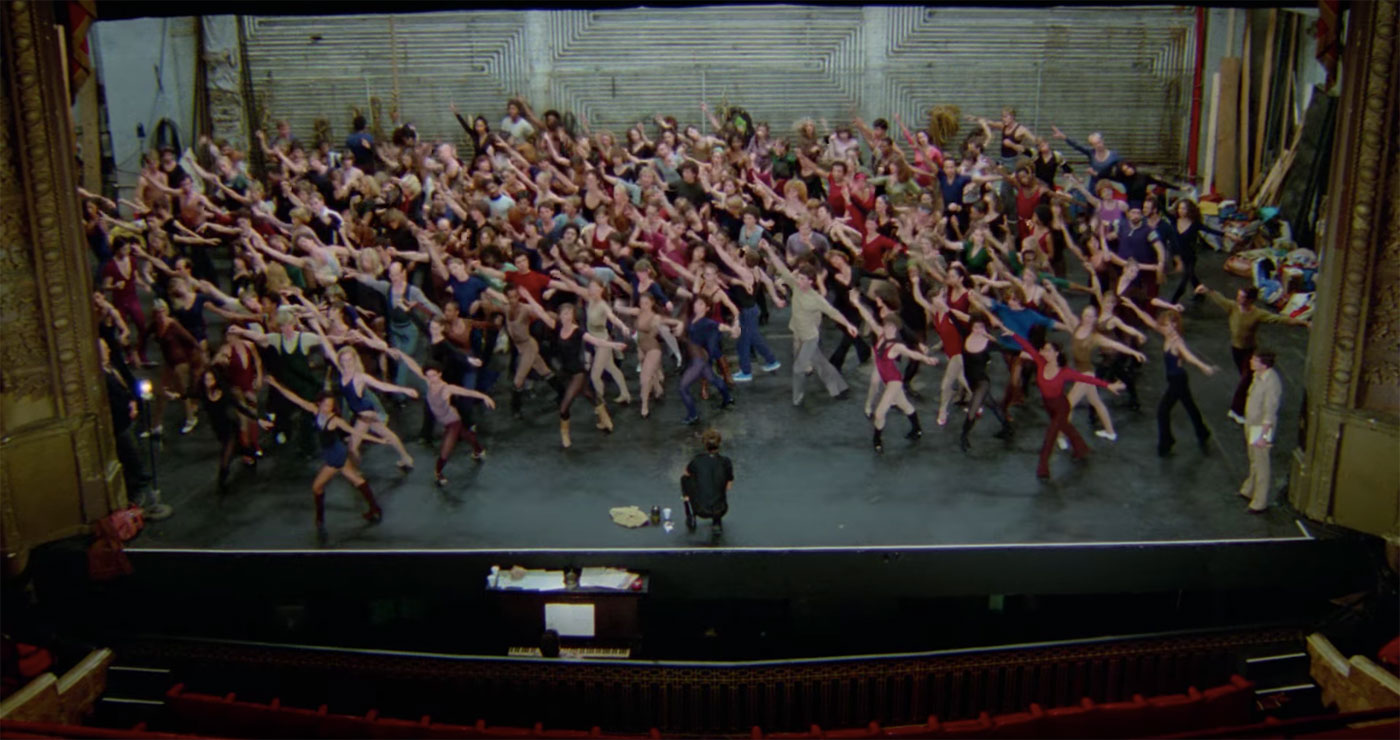
Characters and relationships are introduced with various cuts – whether it’s the bored businessman in the theater seats or Gideon’s ex-wife and daughter watching in the back. Then there’s also the full spectrum of the emotional journey of those auditioning – their joy, disappointment, and hard work – while also acting as an ode to them, as frequent cuts highlight the beauty from all angles of their bodies in motion.
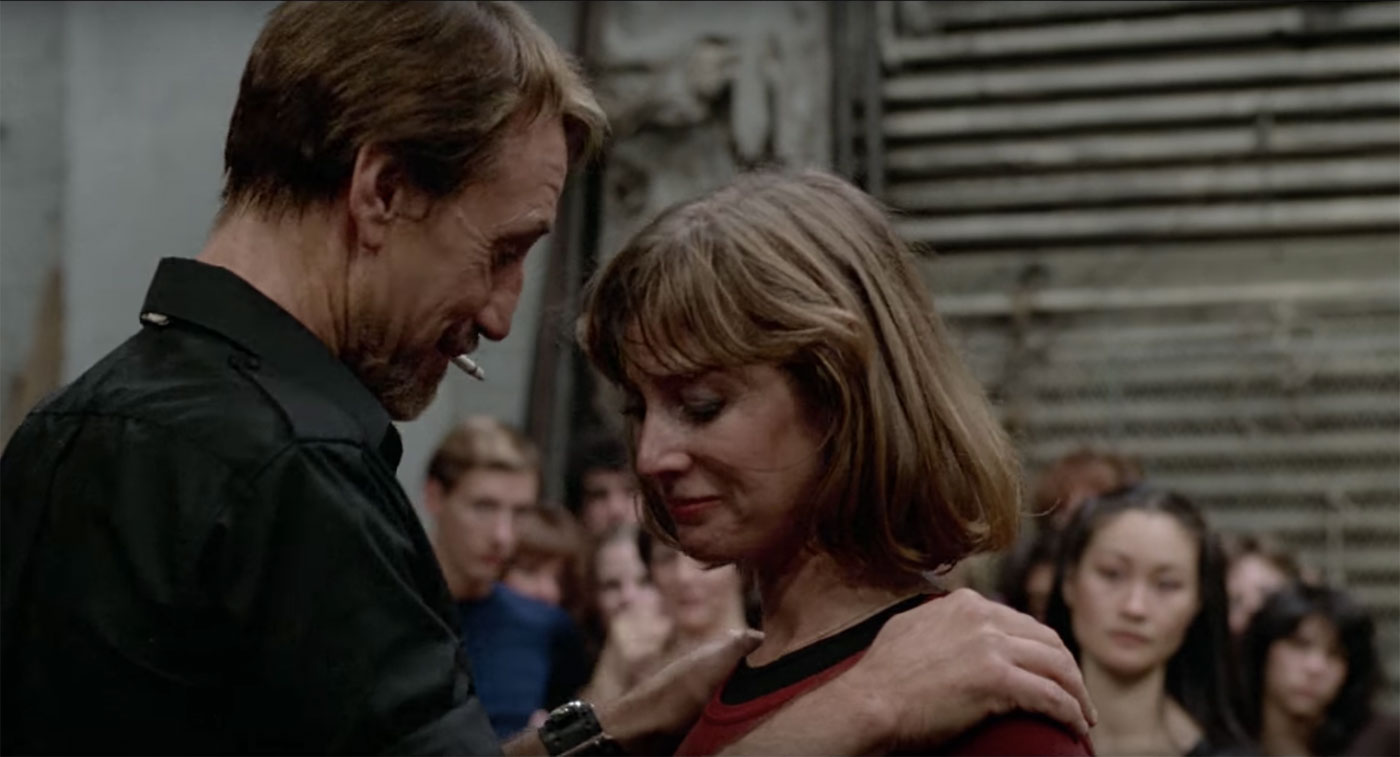
Storytelling rooted to emotion, and told through editing, isn’t isolated to the opening either. Take the “Everything Old is New Again” sequence, which is possibly one of cinema’s most joyous musical numbers. That’s in good part because it does something unusual for a musical number: it’s edited to represent a spectating character’s point-of-view, not our own.
Because that’s the emotional point of that number: it’s for Joe. It’s a scene about joy being performed, but also felt. And we see that wonderfully conveyed by the frequent cutting Alan Heim does to Gideon’s smiling face, or shots where Joe is seen (back turned to us) in-frame and watching. It’s examples like that which demonstrate why All That Jazz is critical viewing for any editors wanting to learn to leverage editing for resonating emotional storytelling.
How to apply the lesson: Take a couple of your favorite films and think about how the main character is introduced. Think about how the editing specifically is telling us about that character, and compare it to the scene above.
In your own work, take a current project or a past one that you’ve worked on. Now try and create two sequences. One that introduces a character like Heim does with All That Jazz, and another that offers a self-contained story like the “On Broadway” sequence. Most importantly, edit both sequences to depend on not a single word of dialogue being spoken.
#2. Baby Driver: Cutting to Music
Martin Scorsese once said “For me, the editor is like a musician, and often a composer.” Baby Driver leaves little doubt that director Edgar Wright feels the same way.
Action sequences synced to music aren’t uncommon, but Baby Driver’s ambition to make all its action symbiotic with music is. From its earliest stages, the film was conceived of as having a musical pulse. The precision in editing for that is no easy feat, which is what makes Baby Driver a must-see for editors.
The first car chase of the film is arguably the best way to demonstrate that.
For one, it signals to the audience its intent with regards to wanting editing-music synchronicity. The robbers slam car doors on beat, Baby sways his windshield wipers to the rhythm, and he water bottle karaokes with the lyrics. All of those moments are cut on the beat of the song. Then as the drums in the song rev up to the word “Bellbottoms” the cuts rev up too. As Baby prepares the car for driving, he takes the car out of park, releases the break, and grabs the steering wheel, all to the quickening pace of the music, as the sequence intercuts with the robbers getting ready to make their getaway.
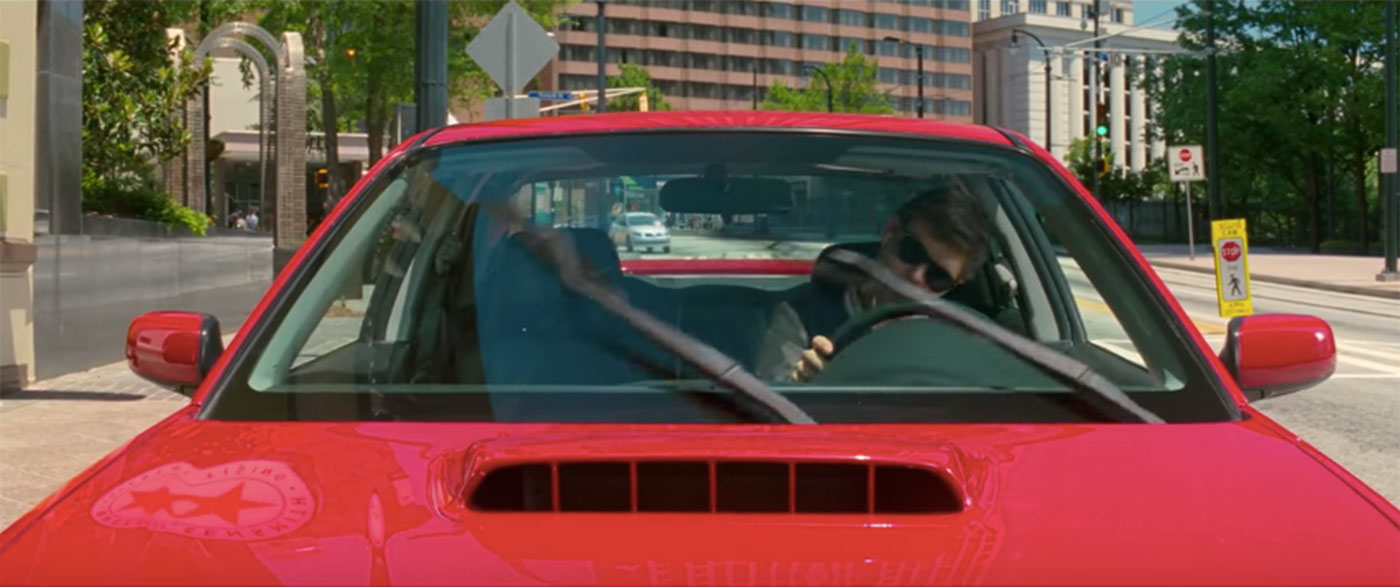
Then, with a point of Jon Bernthal’s finger, the song, the chase, and the editing let loose. Every cut from that point on is synchronized with dizzying precision. Sometimes it’s cuts to reaction shots; sometimes it’s cuts to changing traffic lights; sometimes it’s the car skidding. The effect is that the pace of song becomes the pace of the car chase sequence itself, and you feel like adrenaline is being injected right into your veins. In that way, the sequence isn’t just an example of technical mastery, but audience effect.
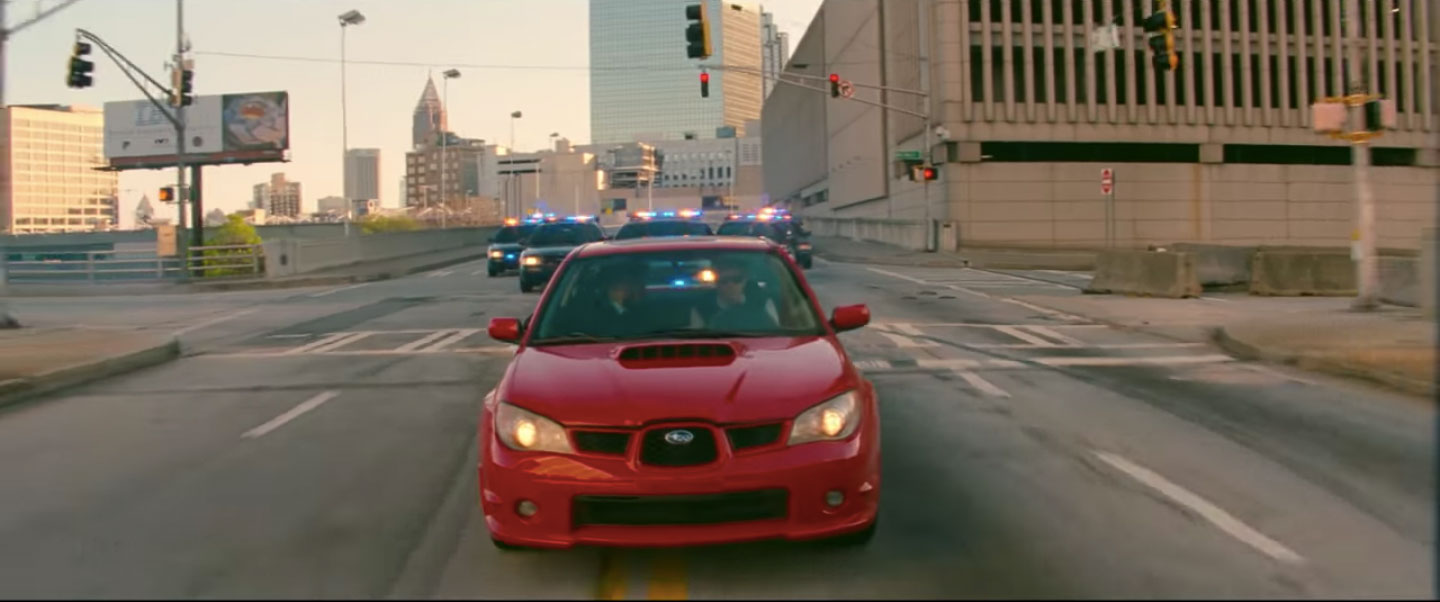
That’s also why we get so many cuts to the actors reacting to their manic car ride, or inserts and close-ups of what Baby is doing as he drives – it enhances our immersion in the sequence by putting us in the car with them, and leaves us primed to feel those beats and cuts. The rest of the film is just as much a blending of flash, intent and execution – whether it’s bullets, coffee runs, or foot chases syncopated to the beat of Baby Driver’s soundtrack.
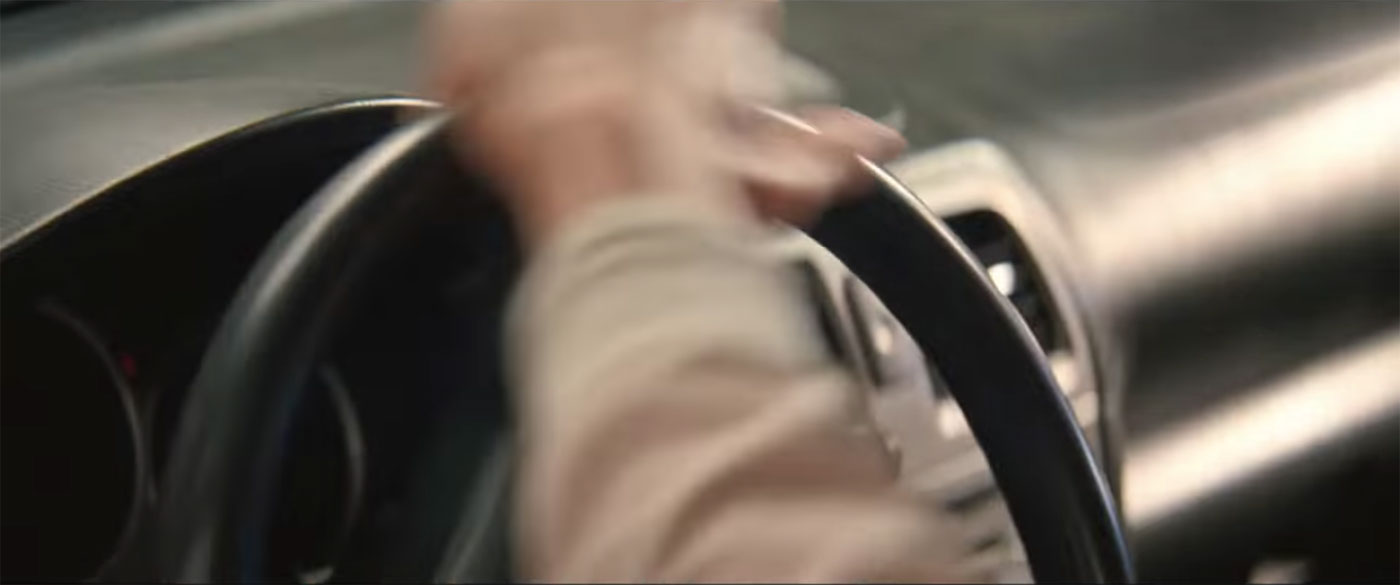
That’s why Edgar Wright’s film is a must see. Yes, for its flashy use of music and editing, as well as the expertise with which cuts are lined up with a song’s momentum and beat. But also because it does all of that with a very important motivation: to create an effect on an audience.
How to apply the lesson: Pick a fast-paced song that you love. It doesn’t matter what genre of music. Now try recutting the Baby Driver car chase with that song. If you need to, you can cheat a little, and use shots from other car chases in the film as well.
Be sure to check out our in-depth interview with Baby Driver editor Paul Machliss.
#3. The Godfather: Juxtaposition
The Russian grandfather of film editing, Sergei Eisenstein, once asked, “Why should the cinema follow the forms of theater and painting rather than the methodology of language, which allows wholly new concepts of ideas to arise from the combination of two concrete denotations of two concrete objects?”
What Eisenstein was talking about was juxtaposition and editing’s innate ability to intercut shots in ways that create new meanings. Most notably, when done right, that new meaning can be deeply thematic. And a textbook example of that is the Oscar-nominated work of editors Peter Zinner and William Reynolds in The Godfather. To be more precise: a textbook example is the famous baptism/assassination sequence in Francis Ford Coppola’s film. (It’s worth noting that the juxtaposition of the scenes was conceived of by Coppola and Puzo in the screenplay, and then seen through by Zinner and Reynolds.)
The sequence begins with a long establishing shot that immerses us in a somber church for a holy occasion: the baptism of Michael Corleone’s godson. It proceeds innocently enough from there, with shots of the baby being prepared for its baptism as its bonnet is carefully removed. But then comes a match cut to a shot of an assassin preparing his weapons, and the sequence becomes something else. The match cut signals a connection between the two parallel narratives that emerge: the rest of the baptism and a series of gangland hits orchestrated by Michael.
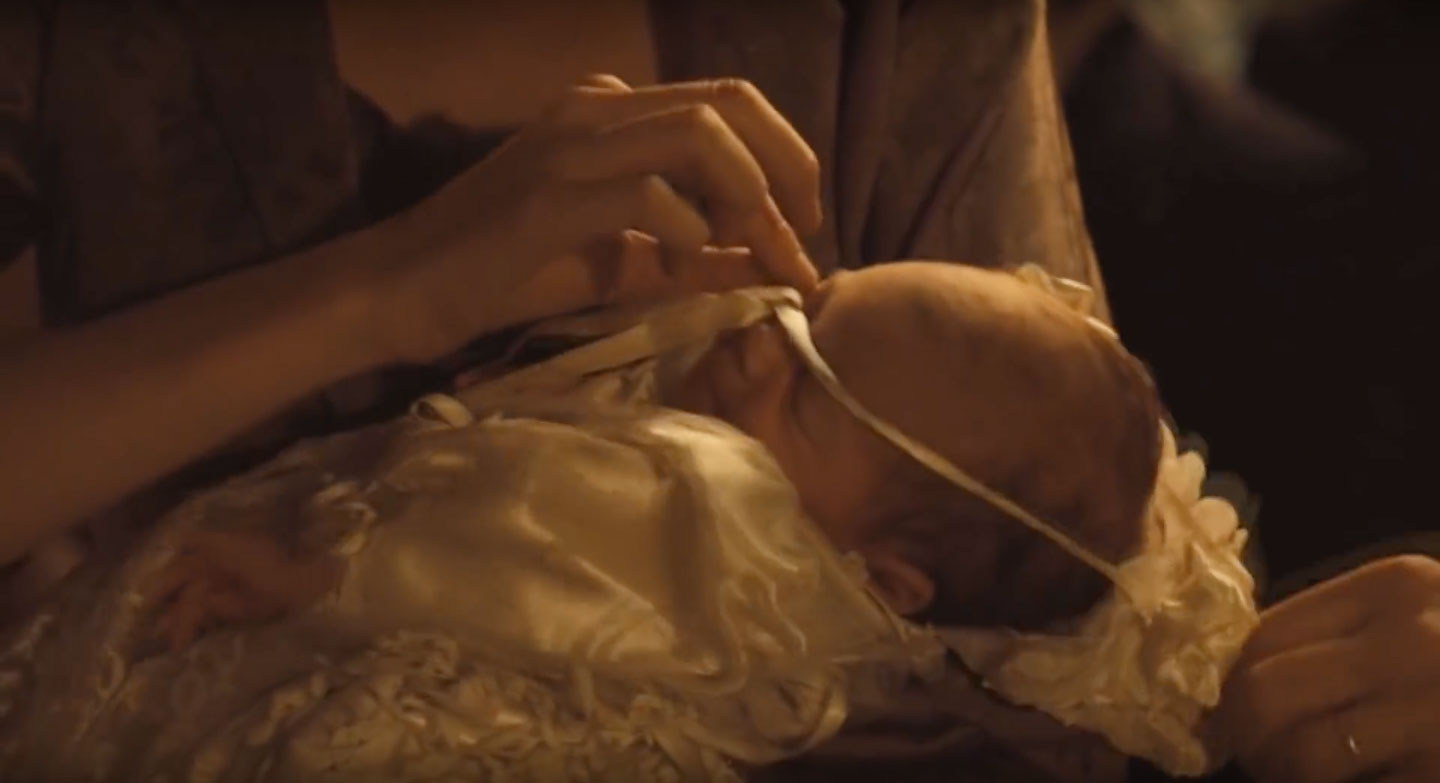
That match cut is not the only visual connection, incidentally. Throughout the five-minute sequence, we get assassins engaging in ritualistic preparations that mirror those of holy water being applied to the baby, and the reclined head of a gangster getting a shave mirrored in the reclined head of the baby as water trickles down its scalp. Moments like those create a powerful juxtaposition of innocence and violence, life and death, spiritual cleansing and moral corruption.
The editing drives that home not only with a recurring return to Michael’s cold face, but most powerfully when his renunciation of Satan is intercut with the killings he’s set in motion; killings accentuated even further with the audio of the baby crying, and blaring church organ music. And all of that drives towards the true juxtapositional power of the sequence. It’s not just about innocence pitted against violence. True to Eisenstein’s words, it also offers new meaning: both sequences are baptisms. Much like the holy water poured on the baby’s head marks a symbol of its recent birth, the blood spilled during the assassinations are symbolically baptizing Michael as The Godfather (it’s a clever bit of double meaning that this happens as he’s being “sworn in” as another kind of godfather).
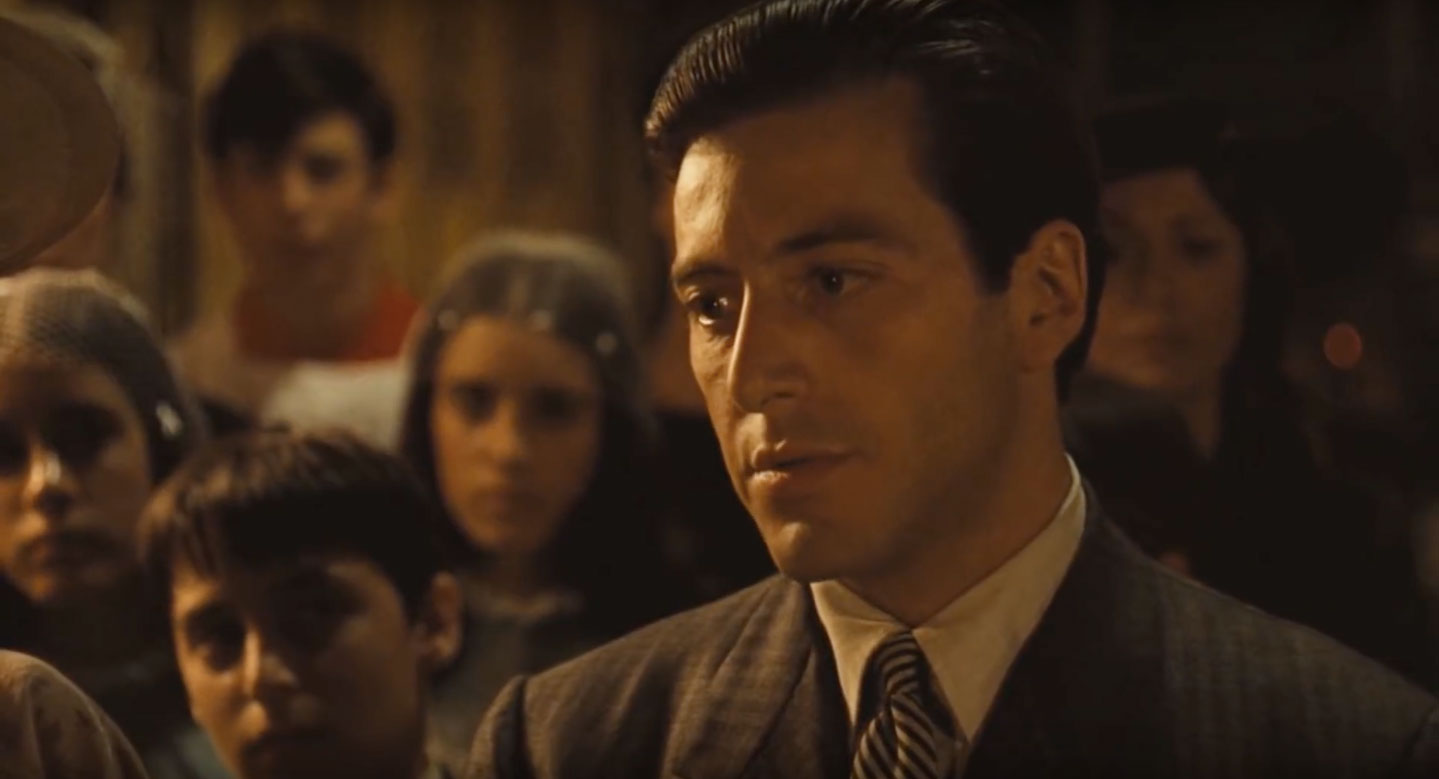
Certainly, both sequences could be extracted and stand on their own, but – to evoke Eisenstein again – the detonation resulting from the two being smashed together creates a deeper, richer thematic idea that any editor should dream of aspiring to accomplish some day.
This kind of deeply symbolic juxtaposition is often planned before production, either by the screenwriter or by the director, but in this case, the inter-cutting idea came during the editing process. You as the editor are a storyteller, just as much as the writer and the director are.
How to apply the lesson: Try to separate the two scenes as we just mentioned. Edit the baptism and the killings to be stand-alone, self-contained, sequences. No juxtaposition and intercutting. Then put one before the other, and notice how different it plays.
#4. Jaws: Editing for Tension
The production woes of Steven Spielberg’s breakout film are the stuff of cinematic legend, and so is the acceptance that technical difficulties with Bruce the Mechanical Shark required the need to hide him on screen. That task fell in large part to editor Verna Field’s Oscar-winning work on Jaws, which has made it a go-to example for editors on how one can edit for a particular effect: enhancing tension by creating spaces that an audience’s imagination will fill.
A case study of how well Jaws does that is its opening, and young Chrissie’s doomed skinny dip.
Except, of course, nothing about it seems doomed initially. The sequence is edited with playful momentum, crosscutting between Chrissie and her fellow skinny-dipper as they run along the beach disrobing. Then once Chrissie has dived in, we get a wide lingering eleven-second shot of a still and vast ocean. We get the impression of the water’s beauty, and the calm of the environment, punctuated with a cut to a close-up of Chrissie silhouetted by an orange sun.
But then we get an ominous underwater point-of-view shot, before a quick cut that returns us the same wide shot of the water. Except this time it plays differently.
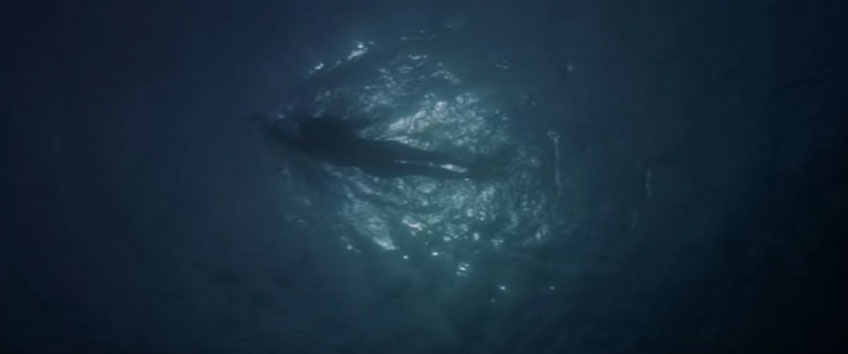
Suddenly, it’s hard not to notice how alone and vulnerable the young woman is. A woman humanized more as we get our first real close-up of her smiling, but not before we very quickly cut to another underwater POV shot. Something is there. Something that in a return to the previous close-up now yanks her underwater, and we now see her smiling face become one of horror.
Then we get a quicker pace of edits between angles, that not only echo her panic, but accentuate the tension within our own uncertainty about what is doing this to her and where it is. Until, eventually, Chrissie disappears. And then comes perhaps the most haunting cut of the whole sequence – one that can only have the effect it has because of everything Field has done previously. We return to that wide shot of the still, beautiful ocean, one last time, but it no longer seems so tranquil and safe. Now it’s a graveyard.
The editing of that sequence conveys the terror of the unseen, and that’s a constant in the film – even when we do see the shark. Take the film’s climax when Brody tries to escape both the shark and the sinking boat. It’s the most prominently that we see the Great White, and yet the editing frequently cuts around the exterior and interior of the boat to maintain that tension and uncertainty of where the shark is, and the feeling that it could appear at any moment.
Jaws is praiseworthy for many reasons, but as an editor, the film’s ability to so efficiently convey that feeling with cuts, is why it’s a film anyone should study – especially those filmmakers looking to make horror or thrillers.
How to apply the lesson: Remember that viral video where The Shining was recut to put together a trailer that made it seem like it was a heartwarming comedy? Try doing the reverse of that. Take an innocuous and happy scene from any film, and find a way to edit it to be ominous and mounting tension. What would you show or not show to create the foreboding feeling? Better yet, challenge yourself to create that sense without the use of music. Can you do it with just the cutting?
#5. Mad Max Fury Road: Editing Action
If you’re looking for a good word to describe George Miller’s action film masterpiece, “relentless” is probably the best one. The multiple car chase centerpieces of the film are so pulse pounding, it’s hard not to feel your heart beat as loudly as the drums Immortan Joe likes to have around on his joy rides. A lot of that is due to the Oscar-winning editing of Margaret Sixel, and a key technique she uses to create the relentless momentum of its action sequences: she almost always cuts on movement.
Now, yes, the short length of shots (usually lasting no longer than four seconds) contributes a kinetic visual speed, but it’s the movement connecting each shot that gives the film most of its never-standing-still feeling. Cuts come on camera pans, the firing of a bullet, an accelerating truck, or even the turn of a character’s head. In short: objects or people who are in a state of constant movement towards something.
Consider the beginning of a chase with a motorcycle gang.
Notice how Furiosa’s running left-to-right cuts back and forth to a motorcycle speeding right-to-left. Not only does it always happen on movement, it conveys the movement towards their inevitable collision. From that point on, there’s no end of motion: a spinning tire, a dropping arm, the billowing of a dust cloud, the handing over of a shotgun, or flames blowing in the wind. Cuts never happen on anything still, so the action sequences never feel still.
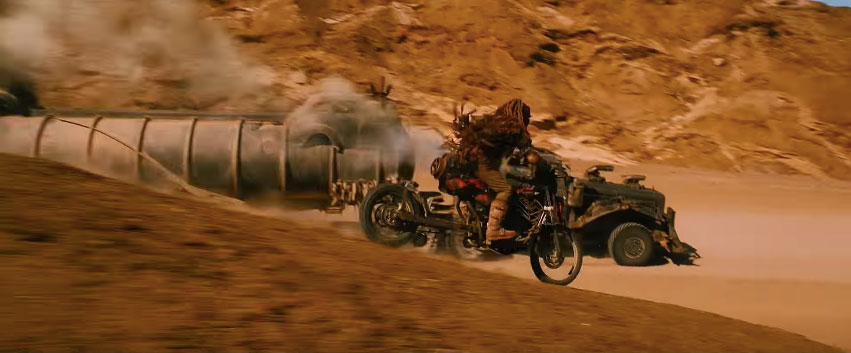
But there’s another key technique to study here too, which enables that pacing and action to properly resonate with audiences. What makes Fury Road work so well is that, despite its high velocity editing, it never neglects orientation. Despite Mad Max and Furious being frequently chased by multiple factions of antagonists, you never lose sight of the character and object location in a scene. That’s because the film frequently cuts to shots that show us the geography of the space we’re in to allow us to understand where we are and what is happening. Sometimes that’s done with lingering establishing shots, like any time Immortan Joe’s caravan launches fireworks. Other times we get intercut shots running parallel to moving vehicles so we see where they are. Especially effective are shots where characters are looking out windows, and we cut to what they see. As a result, we’re oriented.
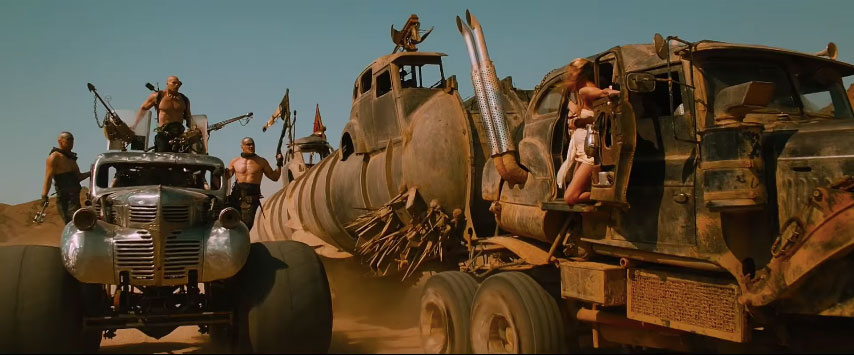
It honors a key philosophy of filmmaking legend Walter Murch: “My job as an editor is to gently prod the attention of the audience to look at various parts of the frame. I do that by manipulating how and where I cut and what succession of images I work with.” Mad Max: Fury Road lives up to that, and because of that – and its mastery of cutting on momentum – it’s a must for editors looking to create sequences with a relentless pace that never sacrifices coherence for an audience.
How to apply the lesson: Find a scene – or scenes – either from an existing film or a project of your own (past or present). Now edit it to only ever cut on momentum. Notice how the pace of the scenes now change. For the full effect, try doing it with a scene that isn’t even necessarily action-packed.
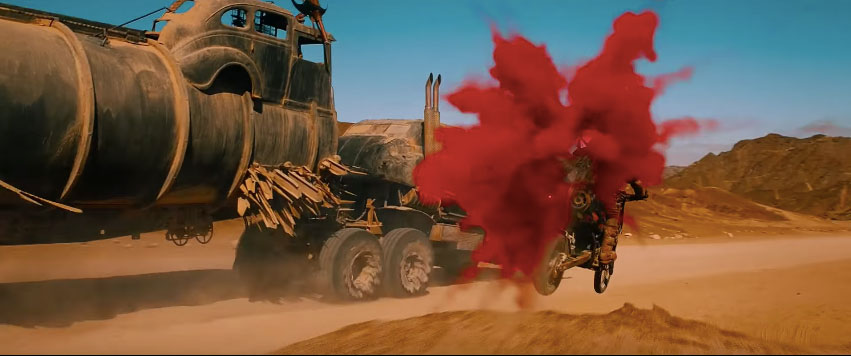
#6 Raging Bull: Capturing Emotional Themes
Martin Scorsese’s biopic about boxer Jake La Motta is widely considered to be one of the best-edited films of all time, thanks to the Oscar-winning work of Thelma Schoonmaker. That’s largely due to its must-study showpieces: the boxing sequences that occur throughout the movie. What makes them worth studying is the way that they’re edited to depict Jake La Motta’s internal emotional state during those boxing matches. Because if you study them closely, you quickly notice each match is edited very differently, and the shots before a fight usually give us a clue of the emotions that will be in play in the ring.
Consider the fight between Jake La Motta and an opponent named Janiro.
Before fists fly, we get a long, uncut shot of Jake jealousy grilling his wife, Vickie, about her referring to Janiro earlier as a “pretty face.” Near the end of the shot, we see La Motta’s face curdle into sour anger, and then instantly Schoonmaker cuts to an extreme close-up of that pretty, now severely beaten, face getting hit. With that edit, we know Jake’s fury has entered the ring with him. From that point on, every single cut in that sequence is about emphasizing two things: the snarling anger on La Motta’s face as he strikes, and the relentless damage that anger is doing with brutal blows. The speed of the editing during the match is meant to emphasize the ferocity of the fight, but it’s really about emotion: the animal-like rage within Jake and its destructive force.
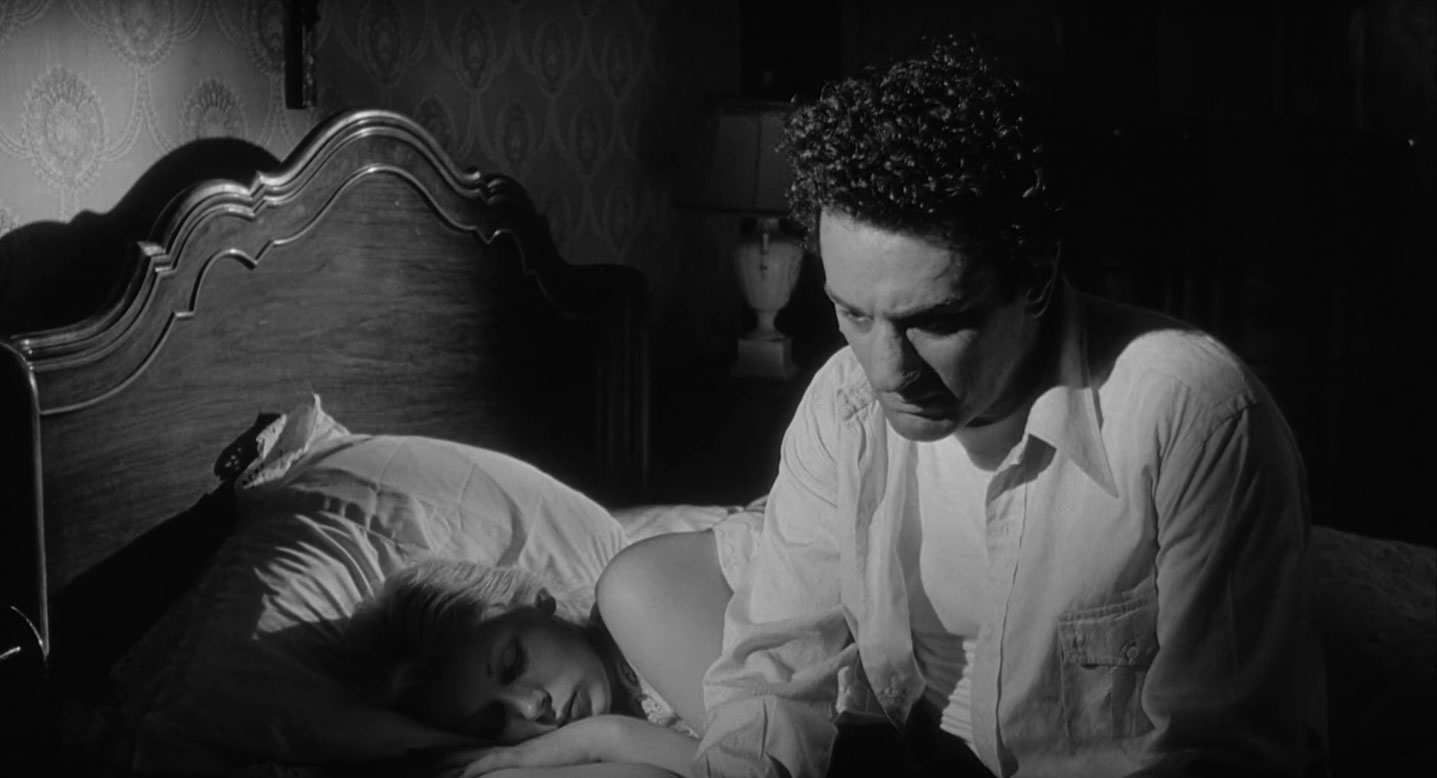
Compare that match to the last fight between La Motta and Sugar Ray Robinson in the film, when Jake’s life and career are waning.
The shots last much longer than the Janiro match – often up to eight seconds – conveying the slowing down of La Motta’s career, especially through some beautifully shot slow-motion moments. That temporary beauty passes when Schoonmaker unleashes a barrage of cuts depicting the brutal beating La Motta receives at the hands of Robinson.
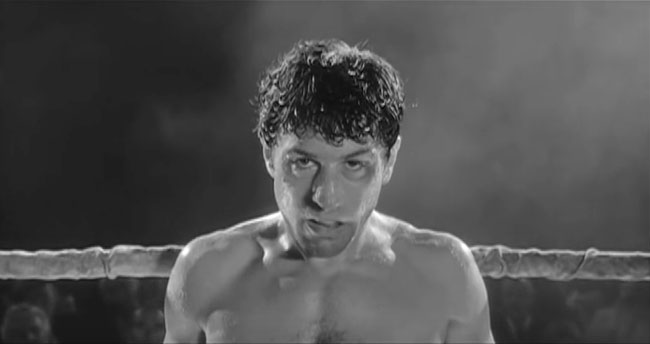
In particular, she creates a wonderful sense of disorientation by cutting to a variety of angles and ignoring continuity (notice how sometimes a swing from Robinson comes in from one side, but lands on the other). The result is a beating that mirrors the blows and destruction La Motta has brought upon himself (mirrored in his inviting Robinson to hit him) at this stage in the film, where both his career and personal life has unraveled.
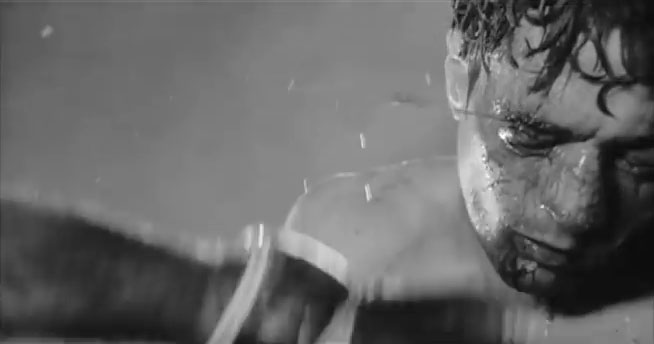
It’s a moment that recalls the evoked emotion of an earlier boxing match sequence in the film: let’s call it the “Home Movie Montage.”
In this very different scene, we’re taken through a series of fights represented by still images and slow-motion shots, which are intercut with home movie footage. In the fights, Jake looks angry and in states of dominance and celebration; but in the home movie footage (a rare use of color in Raging Bull) we see docility. Here is La Motta at his most domestic. The crosscutting creates dual realities: an idealized life of familial happiness, and a life of anger and violence. If you have any doubt that Raging Bull’s fights are edited to reflect the emotional core of Jake La Motta’s life outside of the ring, you’ll shed it when you reach the end of the film and realize which of the two realities he ultimately succumbed to.
How to apply the lesson: Editing to capture a film’s thematic core typically requires having access to a script, a director, and all the footage from a film to properly put together. So a simple exercise to apply Raging Bull’s lesson may not be so easy to come by. However, the beauty of good theme work is that it enters into a film’s very DNA and becomes something an audience can almost instinctively feel. With that in mind, try this: watch any of the clips above without sound. Notice how just with images, and the cutting, you nonetheless feel the individual meanings each scene is aiming to achieve.
Playing with Sight, Sound, and Speed
Dissecting an edit can be tricky, though, because if the film is any good, you’ll probably be pulled into the story as you watch. If you’ve never watched a film with the sound off, I highly recommend that you try it. Try watching a film that you know well with the sound off, and then try watching a film you’ve never seen before. Both can be very instructive.
Without the sound, you’ll be forced to focus more on the images, and you’re much less likely to be sucked into the story. If you can un-suspend your disbelief, you’ll be able to analyze the editing much more accurately. Likewise, if you want to understand how to edit sound, try listening to a film or a scene that you’re studying, without looking at the screen. You’ll start noticing all sorts of subtleties of sound that are hard to consciously pick up on as you watch the film.
Next try watching a film at 2x speed, with the sound on or off. In addition to keeping you from getting sucked into the film, it’ll also reveal patterns in the editing that you probably wouldn’t have noticed at normal speed. Slow, gentle camera moves that were imperceptible at normal speed stick out when sped up, and you’ll be able to grasp the arc of a scene in a new way. I encourage you to pick some of the films that you most enjoy and use these tools to examine them.
The Beginning of the Journey
These six films offer a wide range of examples highlighting the dexterity of editing and what its practitioners are capable of. However, they are far from the only editing master classes that editors need to see. The history of cinema has no shortage of films — whether they’re Oscar winners or colleague recommendations — that editors should watch. The more you dive in, and the more you study what you see, the more you, and your craft, will benefit.



